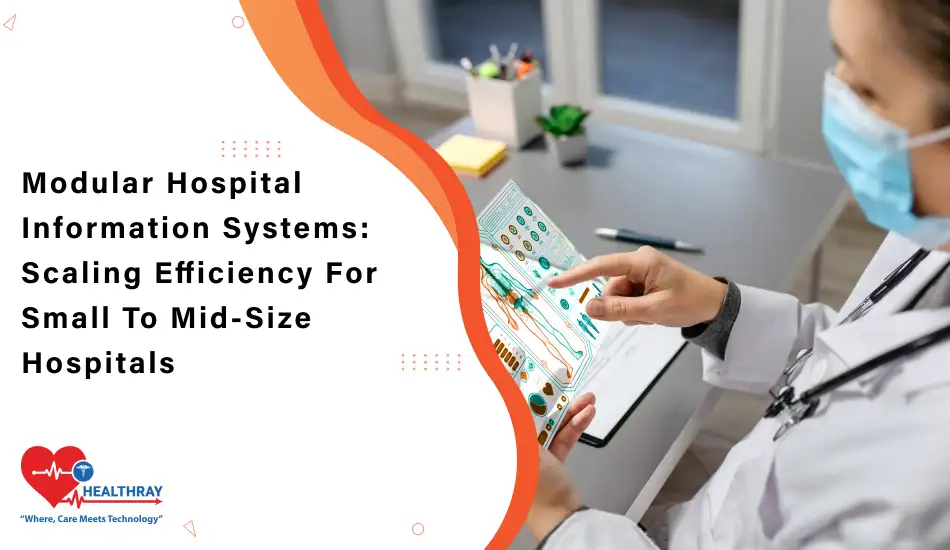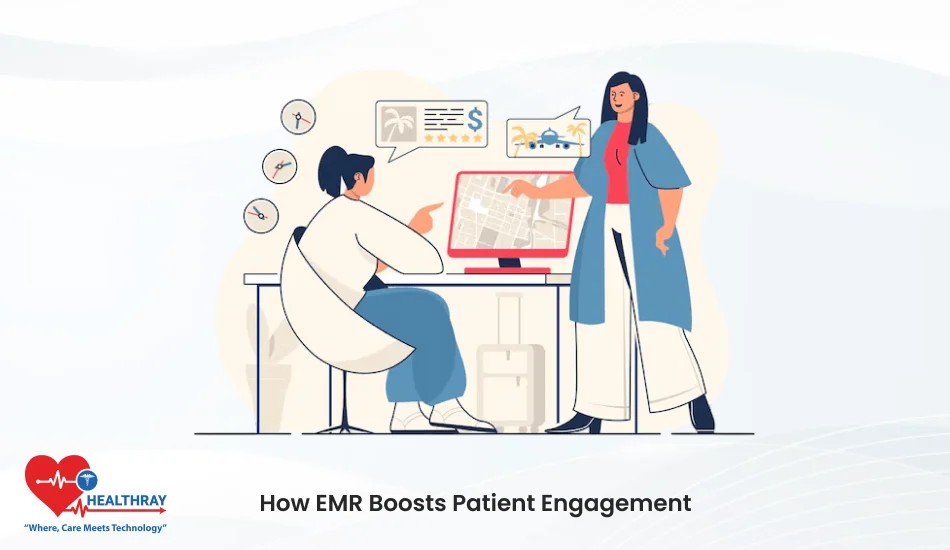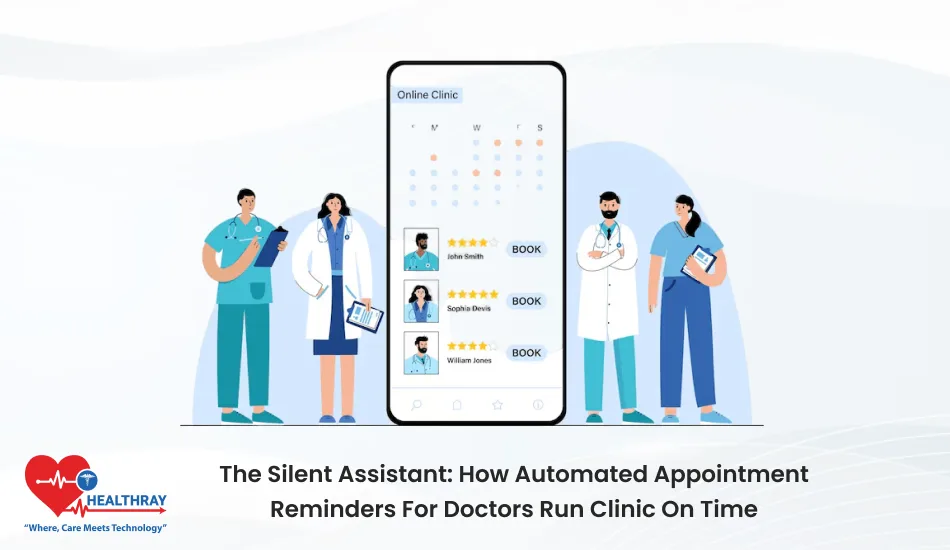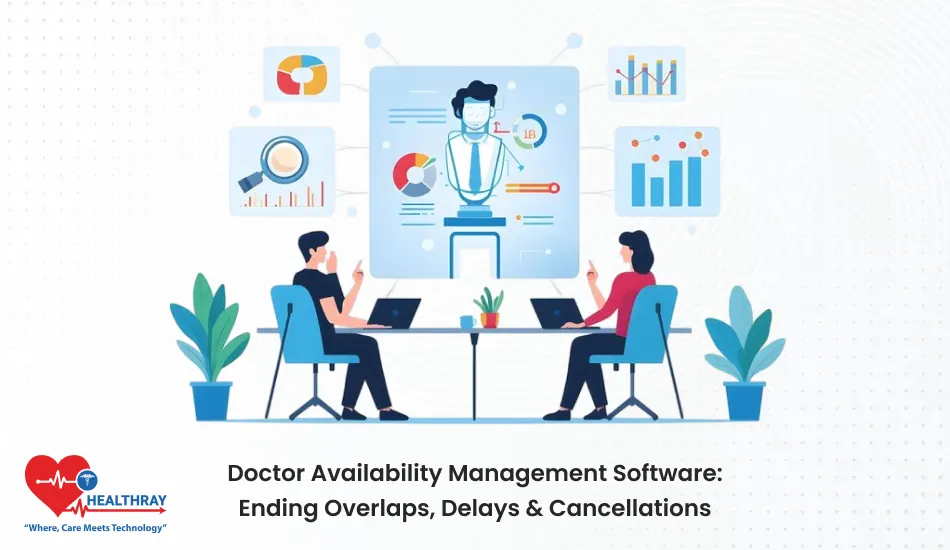Summary
Small and mid-size hospitals often frequently struggle with operational, financial, and regulatory challenges. Thus, adopting large-scale, monolithic digital systems is a big challenge for them. To cope with such challenges, hospitals should leverage modular hospital information systems. This modular system minimizes the initial investment and expedites the implementation process and ensures that hospitals should only pay for the features that genuinely improve their output.
For facilities managing fluctuating patient loads and navigating new compliance rules, this system provides immense flexibility to hospitals to quickly adapt and expand their capacities. In this blog I will discuss how hospital information systems scale efficiency for small and mid-size hospitals. Additionally, I will talk about how hospitals can implement a gradual digital transition based on their needs.
Introduction
Modular Hospital information system is ushering in a new phase specially for small and mid-sized hospitals. Previously, community-based hospitals usually faced challenges with adopting legacy hospital software, such as complex setup, heavy initial investment, and rigid systems that didn’t match with their limited resources. To cope with such challenges, hospitals are adopting modular hospital information systems. It offers flexible and scalable approaches, especially for hospitals that are community-focused and work with limited resources.
I am working as a senior healthcare expert in Texas, USA . My team often struggled with a rising patient load and outdated system. My clinic budget was limited and it was difficult for us to implement digital upgrades in the system. Then I started with affordable healthcare management software. Initially I began with patient registration and billing modules. Eventually, my clinical workflows got smooth and errors were lessened. Then slowly we added emr and pharmacy modules and made the entire operation smooth and efficient.
Unlike traditional all-in-one software, modular HIS gives freedom to hospitals to choose modules that are relevant to their workflows, such as registration, EMR (Electronic Medical Records), scheduling, billing, and pharmacy management. By leveraging the hospital information system, clinics can embark on a digital transition as per their needs and budget.
With this modular system, the healthcare ecosystem is being redefined to be more patient-centric, cost-effective, and compliant. In a hospital information system, every module works independently and smoothly integrates with existing systems.
Benefits for Small and Mid-Size U.S. Hospitals
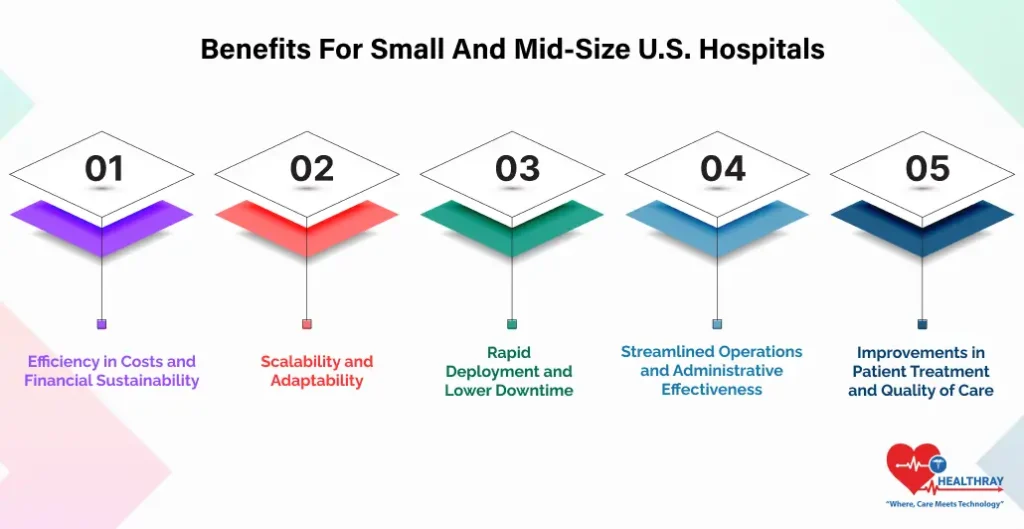
Let’s check out:
Efficiency in Costs and Financial Sustainability
Modular hospital management solutions are a smart financial move for hospitals. Furthermore, it dramatically reduces cost when compared with traditional full-suite EMRs and large-scale systems. Further, with a hospital information system, medical facilities can purchase modules that are genuinely required in their firm.
In this way, hospitals can limit the IT spending footprint, especially if your margins are tight. Additionally, hospitals can match their operational growth with their expenses by gradually implementing new capabilities and options.
Step towards digital era with our healthcare solution
Revamp your hospital facilities and embrace change for better healthcare management. Ease in managing and organizing large medical datasets leads to effective analysis. Seize the opportunity now!
Scalability and Adaptability
With modular clinical information solutions, you can easily expand your hospital system whenever you need. Further, if a hospital began as a single-site facility, you can later incorporate inpatient ER modules, telehealth components, and advanced analytics in the system according to your budget.
Additionally, this flexibility allows hospitals to quickly adapt to clinical practices, regulatory changes, or sudden surge demands, just like the COVID-19 pandemic situation.
Rapid Deployment and Lower Downtime
Have you ever wondered why implementing hospital systems takes so long? Traditional system took months and years for complete setup. But with modular hospital information management system software, this process becomes extremely quick.
Further, in hospital information solutions, every module works independently and is perfectly interoperable. Additionally, hospitals can launch new modules and features in just a few weeks. Result? It offers minimum downtime and lower risks and clinical teams can reap benefits ahead of time.
Streamlined Operations and Administrative Effectiveness
The main challenges of hospitals are resources and time management. Furthermore, modular HIS smartly resolves these challenges by targeting specific pain points such as inventory management and patient scheduling.
Further, through step-by-step implementation, you can easily resolve the bottlenecks. Additionally, automated workflow not only reduces the workloads but also minimizes the errors. Thus, staff can now focus on more strategic work and patient care rather than indulging in the same repetitive work.
Improvements in Patient Treatment and Quality of Care
In the current digital era, patients have become smarter and more tech-savvy. Further, patients are looking for both transparency and convenience. Through patient portals, digital appointment tools, and simple access to medical records, a modular hospital management system makes it simple to satisfy your patients.
Further, accurate and real data ensures smoother care transitions, fewer duplicate tests, and overall better patient satisfaction. Furthermore, this HMIS software system not only raises the standard of operations but also advances treatment.
Flexible, Plug-and-Play Features
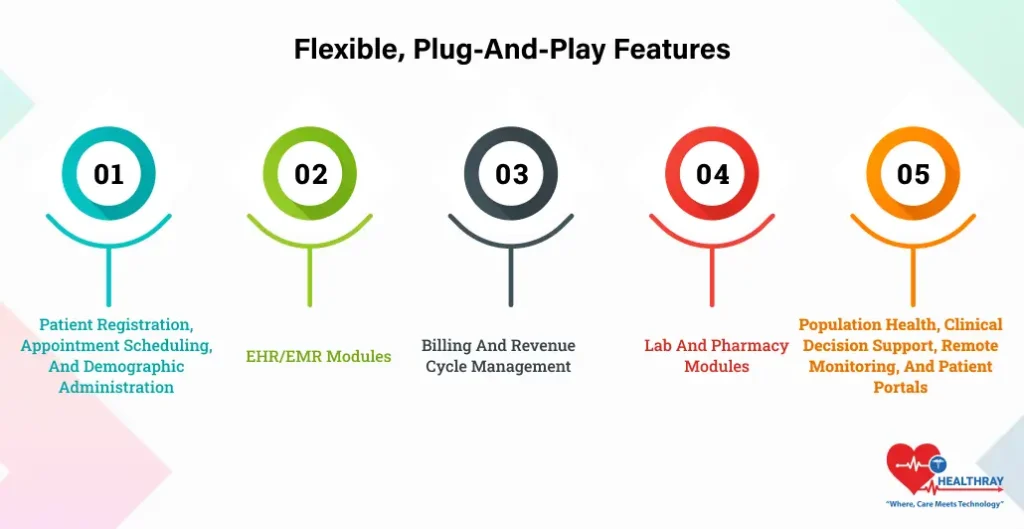
Modern and saas-based HIS platforms are particularly focused on adaptable configuration features for hospitals. Further, hospitals no longer need to raise your budget for customization. These systems provide interoperability,scalability and user-friendly features for frontline staff. Key Features:
Patient Registration, Appointment Scheduling, and Demographic Administration
These features make the medical workflows easy and efficient. Further, medical staff can save significant time; now they don’t need to check all appointment details, patient information and registration manually.
EHR/EMR Modules
With EHR/EMR modules, hospitals can easily streamline their procedures. Further, this module centralizes all the relevant data of patients’ clinical documentation, imaging, orders, and care plans.
Thereby, it helps hospitals to easily access ,update and securely view the patient data. Additionally, these modules empower the care team to take faster and more informed decisions and minimize duplications and errors in the workflows.
Billing and Revenue Cycle Management
With billing and revenue cycle management features, hospitals can easily simplify their financial operations. Further, these incredible features optimize operations, such as fast claims processing, insurance verification, and payment tracking, that previously took a long time to accomplish.
Additionally, it minimizes automation errors, improves cash flow and reduces administrative burden. To ensure that staff can put more focus on providing high-quality treatments to patients.
Lab and Pharmacy Modules
With the hospital management system, now you can effortlessly integrate lab and pharmacy modules. Further, this module is fully connected with patient records, medication dispensing, and analytics.
Thus, improving both accuracy and efficacy in the system. Additionally, doctors and pharmacists can access real-time data and make faster and tangible decisions. Also, it minimizes error and redundancy in the process.
Population Health, Clinical Decision Support, Remote Monitoring, and Patient Portals
Modular HIS system provides flexibility to small and mid-size hospitals. Further, they can purchase features that they need in their system. Thus, it evades the need of buying unnecessary features, especially for hospitals where budget is still a major concern.
Further, population health tools and clinical decision support systems support clinics in better care planning and proactive interventions. Further, remote monitoring and patient portals keep the patient engaged and informed. Also, it enables smoother communication with care teams. Overall, this system empowers hospitals to deliver personalized and patient-focused care.
Cost Management and ROI
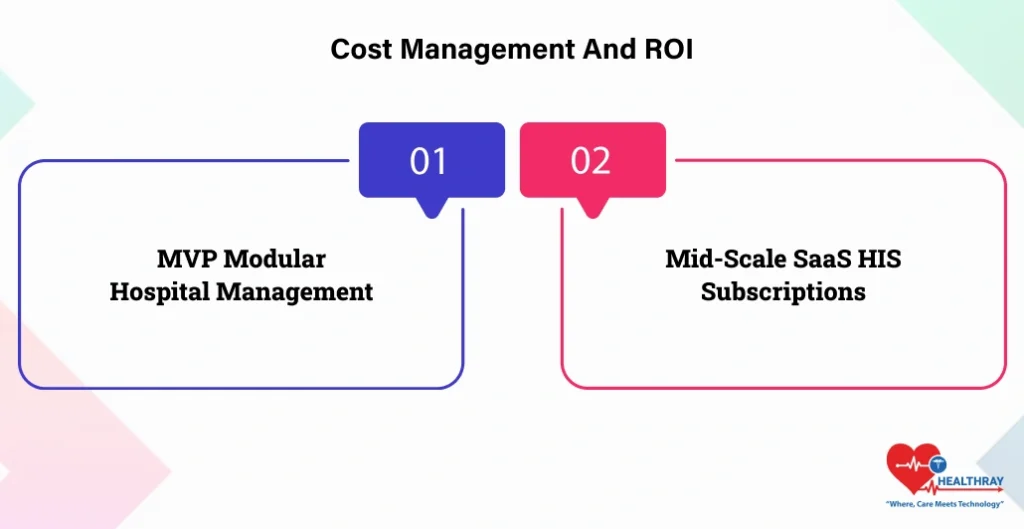
The biggest strength of modular and saas based HIS platforms is cost transparency and scalability. Unlike traditional one-size-fits-all pricing, modular hospital management systems are more aligned with cost usage and functional scope.
- MVP Modular hospital management
For small pilot projects and initial deployment, MVP modular HIS is a cost-effective solution. This approach helps hospitals to start their journey with essential modules. Thus, it minimizes the initial upfront investments. Further, with step-by-step expansion, hospitals can gradually add new modules. Overall, it ensures controlled spending, faster adoption, and an early ROI.
- Mid-Scale SaaS HIS Subscriptions
For community hospitals, mid-scale SaaS HIS subscriptions are an affordable and flexible option. It typically ranges from $200 to $3,000/month, depending on hospital size and selected features. Hospitals have to pay only for modules and functionalities that are essential. Thus, it optimizes the operational cost and makes the budgeting predictable.
Conclusion
For small and mid-size U.S. hospitals, the days of inflexible, high-cost IT systems are ending. Modular, cloud-based SaaS HIS platforms offer an accessible path to digital efficiency, patient safety, and organizational agility. With all the resources of the biggest health systems in the country, these solutions, which were created with the needs of the community in mind, allow hospitals to expand at their own speed, reduce expenses, and provide contemporary care within close proximity.
I hope the above blogs provide you useful insights on hospital information systems and how they successfully scale efficiency for small and mid-sized hospitals.
